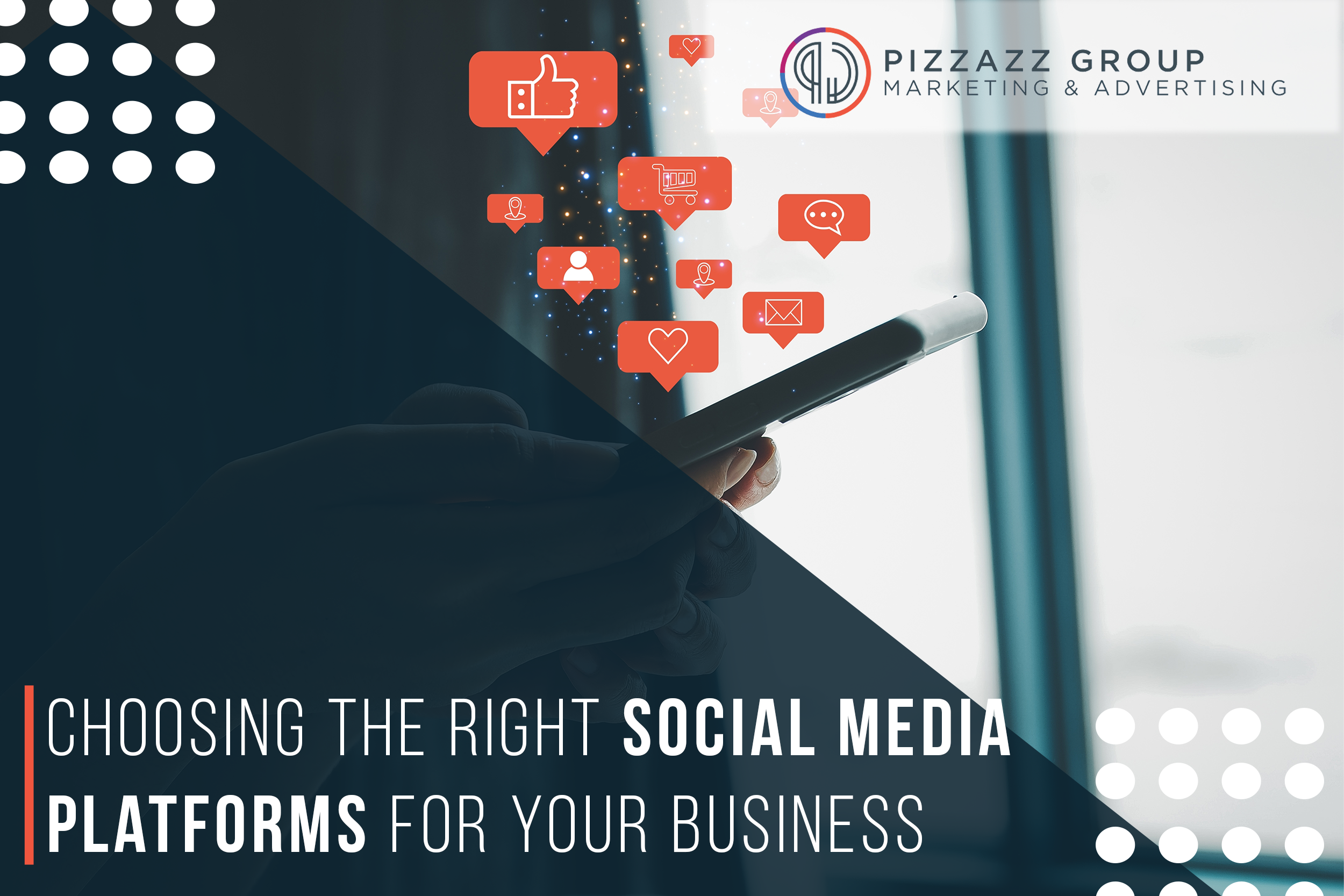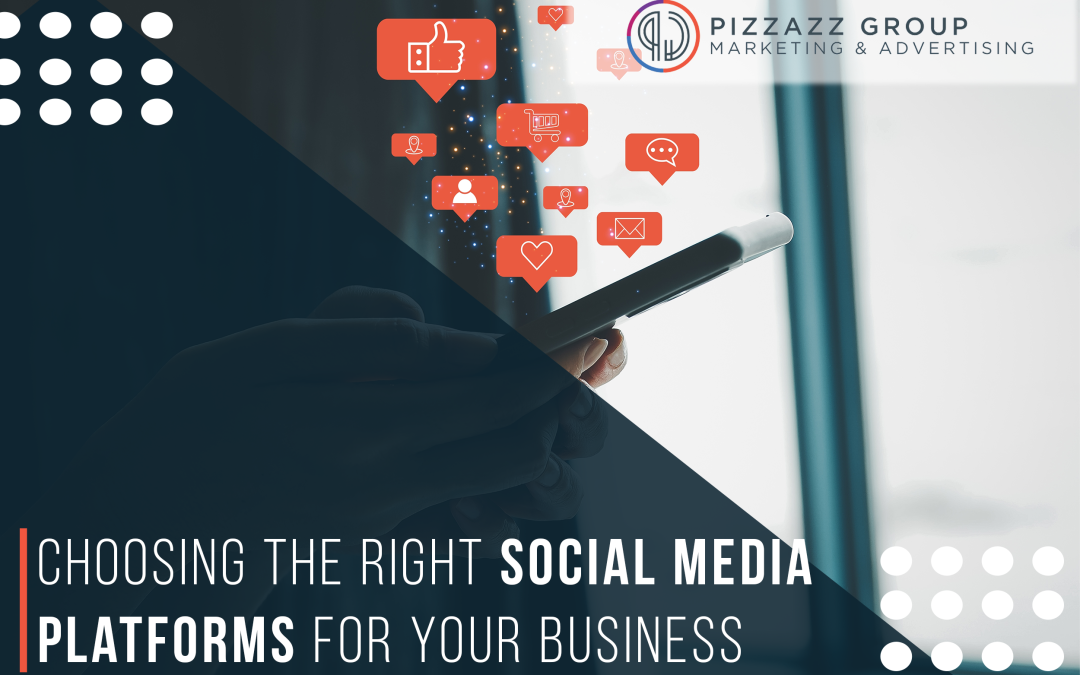
With the numerous social media platforms available, each has its unique features and demographics, choosing the right one(s) for your business can be challenging. In this comprehensive guide, we will explore the key factors to consider when selecting the best social media platform for your business and provide insights into the most popular platforms to help you make an informed decision.
Understanding Your Business Goals
Before diving into the specifics of each social media platform, it’s recommended to define your business goals
- Brand Awareness: Reaching a large audience to increase recognition and visibility.
- Customer Engagement: Interacting with customers to build relationships and foster loyalty.
- Lead Generation: Capturing potential customers’ information to convert them into paying clients.
- Sales and Conversions: Driving direct sales or encouraging specific actions, such as sign-ups or downloads.
- Customer Support: Providing assistance and support to customers through social media channels.
- Market Research: Gathering insights and feedback from your audience to improve products or services.
With the numerous social media platforms available, each has its unique features and demographics, choosing the right one(s) for your business can be challenging. In this comprehensive guide, we will explore the key factors to consider when selecting the best social media platform for your business and provide insights into the most popular platforms to help you make an informed decision.
Understanding Your Business Goals
Before diving into the specifics of each social media platform, it’s recommended to define your business goals
- Brand Awareness: Reaching a large audience to increase recognition and visibility.

- Customer Engagement: Interacting with customers to build relationships and foster loyalty.
- Lead Generation: Capturing potential customers’ information to convert them into paying clients.
- Sales and Conversions: Driving direct sales or encouraging specific actions, such as sign-ups or downloads.
- Customer Support: Providing assistance and support to customers through social media channels.
- Market Research: Gathering insights and feedback from your audience to improve products or services.
Knowing Your Target Audience
Understanding your target audience will assist you in choosing the social media platforms. Consider factors such as age, gender, location, interests, and online behavior. Different platforms attract different demographics, so knowing who your audience is and where they spend their time online will help you make a more informed choice.
Key Social Media Platforms and Their Features
1. Facebook
Overview
With over 2.8 billion monthly active users, Facebook remains one of the most popular social media platforms. It caters to a wide range of demographics and offers robust advertising options.
Best For
- Brand Awareness: Reach a broad audience with targeted ads and organic content.
- Customer Engagement: Utilize Facebook Groups and Pages to interact with your community.
- Lead Generation: Use Facebook Lead Ads to capture potential customers’ information.
Considerations
- Content Type: Mix of text, images, videos, and links.
- Advertising: Advanced targeting options based on user behavior and demographics.
- Analytics: In-depth insights and analytics through Facebook Insights.
2. Instagram
Overview
Instagram, owned by Facebook, is a visual-centric platform with over 1 billion monthly active users. It’s popular among younger demographics and is ideal for businesses with strong visual content.
Best For
- Brand Awareness: Showcase your brand through high-quality images and videos.
- Customer Engagement: Use Stories, Reels, and IGTV for interactive content.
- Sales: Utilize Instagram Shopping and shoppable posts to drive e-commerce sales.
Considerations
- Content Type: High-quality images, short videos, Stories, Reels, and IGTV.
- Advertising: Sponsored posts, Stories ads, and Shopping ads.
- Influencer Marketing: Collaborate with influencers to reach a wider audience.
3. Twitter
Overview
Twitter is a microblogging platform with over 330 million monthly active users. It’s known for real-time updates, short messages (tweets), and hashtag trends.
Best For
- Customer Engagement: Interact with customers through tweets and direct messages.
- Brand Awareness: Reach a broader audience through trending hashtags and retweets.
- Customer Support: Provide real-time support and responses to customer inquiries.
Considerations
- Content Type: Short text updates (280 characters), images, videos, polls, and threads.
- Advertising: Promoted tweets, accounts, and trends.
- Analytics: Track engagement, impressions, and follower growth through Twitter Analytics.
4. LinkedIn
Overview
LinkedIn is a professional networking platform with over 740 million members. It’s ideal for B2B marketing, professional services, and networking.
Best For
- Lead Generation: Capture high-quality leads through LinkedIn Ads and Sponsored InMail.
- Brand Awareness: Build thought leadership through articles, posts, and LinkedIn Pulse.
- Networking: Connect with industry professionals and potential clients.
Considerations
- Content Type: Professional articles, company updates, job postings, and SlideShare presentations.
- Advertising: Sponsored content, InMail, and display ads.
- Analytics: LinkedIn Analytics provides insights into post performance and audience demographics.
5. Pinterest
Overview
Pinterest is a visual discovery and bookmarking platform with over 450 million monthly active users. It’s particularly popular among women and DIY enthusiasts.
Best For
- Brand Awareness: Use visually appealing pins to showcase your products or services.
- Sales: Drive traffic to your website or online store with shoppable pins.
- Content Marketing: Share infographics, tutorials, and how-to guides.
Considerations
- Content Type: High-quality images, infographics, and videos.
- Advertising: Promoted pins and shopping ads.
- Analytics: Pinterest Analytics offers insights into pin performance and audience behavior.
6. YouTube
Overview
YouTube is the largest video-sharing platform with over 2 billion monthly active users. It’s a powerful tool for businesses with video content.
Best For
- Brand Awareness: Reach a global audience with engaging video content.
- Content Marketing: Share tutorials, product demos, and educational videos.
- Advertising: Utilize YouTube Ads to promote your videos and drive traffic.
Considerations
- Content Type: High-quality videos, live streams, and Shorts.
- Advertising: TrueView ads, pre-roll ads, and bumper ads.
- Analytics: YouTube Analytics provides detailed insights into video performance and audience demographics.
Factors to Consider When Choosing a Social Media Platform
1. Demographics
Understanding the demographics of each platform will help you reach your target audience more effectively. For example, if your target audience is primarily teenagers and young adults, platforms like Instagram and TikTok are more suitable.
2. Content Type
Different platforms support different types of content. If your business relies heavily on visual content, Instagram and Pinterest are ideal. For video content, YouTube is the best choice. For professional content, LinkedIn is more appropriate.
3. Engagement Style
Consider how you want to engage with your audience. Twitter and Facebook are great for real-time interactions and customer support, while Instagram and Pinterest are better for visual storytelling.
4. Industry Relevance
Some platforms are more suited to certain industries. For example, LinkedIn is ideal for B2B companies and professional services, while Pinterest is excellent for fashion, home decor, and DIY businesses.
5. Advertising Options
Evaluate the advertising options available on each platform. Facebook and Instagram offer advanced targeting and a variety of ad formats. LinkedIn provides B2B advertising options, while YouTube offers video ads.
5. Resources and Budget
Consider the resources and budget you have available for managing your social media presence. Some platforms require more frequent content updates and engagement, which can be time-consuming and costly.
Conclusion
Choosing the right social media platform for your business is a critical decision that can significantly impact your marketing success. By understanding your business goals, knowing your target audience, and evaluating the features and demographics of each platform, you can make an informed choice that aligns with your objectives.
Remember, it’s not about being on every platform but being on the right ones that will effectively reach and engage your audience. Regularly review your social media strategy, analyze performance metrics, and adjust your approach as needed to ensure you are maximizing your efforts and achieving your business goals.
For more information on SMS Marketing, contact Pizzazz Group at customer@pizzazzgroup.com or by calling (614) 350-1681.
Related Social Media Marketing Blogs
Small Business Social Media Tips
Creating a compelling social media presence for small businesses creates a strong connection with your customer, amplification of brand awareness, and increased sales. Here’s a comprehensive guide on small business social media tips.1. Understand Your AudienceBefore...
Building a Social Media Community
Building a thriving community around your brand, business, or personal profile is more than just accumulating followers. It involves fostering meaningful connections, nurturing engagement, and creating a supportive environment where members actively participate and...
How to Use Social Media Hashtags Effectively
When used strategically, hashtags can amplify your content's visibility, attract a targeted audience, and align with broader conversations or trends. Whether you're a business, influencer, or content creator, mastering the art of using hashtags effectively can...





